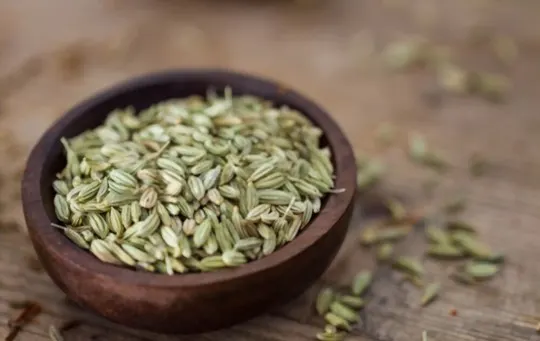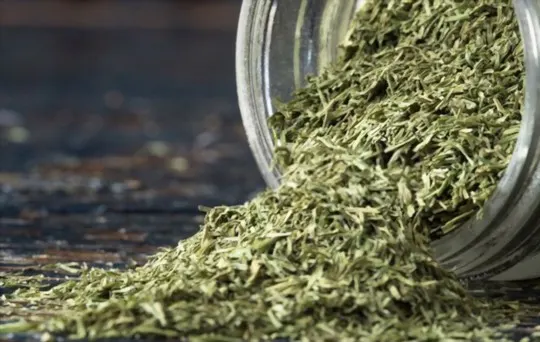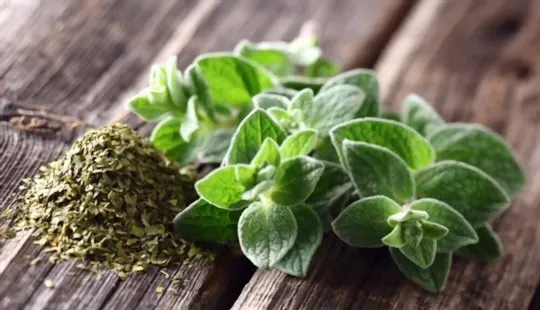Finding the perfect dill seed substitute can feel like a mini kitchen adventure.
We’ve got you covered with some top-notch swaps that’ll save your dish.
Truth is, not having dill seeds on hand isn’t the end of the world.
There are plenty of other ingredients lying around in your pantry that can do the trick.
And hey, using these alternatives might just make your dish even more amazing.
It’s all about mixing, matching, and experimenting until you find that perfect combo.
No need to hit the panic button or rush out to the store.
We’re here to guide you through this with some easy, peasy options.
Ready to dive in and discover these kitchen lifesavers?
What are Dill Seeds?

Dill seeds are the dried seeds of the dill plant, which is a member of the parsley family.
The plant is native to Europe and Asia, although it can also be found in North America.
The planting season for dill begins in early spring and continues through mid-summer.
Dill grows best in sandy soil when it has plentiful sunshine.
Dill is self-pollinating, which means it pollinates itself – after plant blooms, seeds mature on the plant’s flower stem rather than on the plant’s stalk.
This makes dill easy to harvest, as you do not have to worry about uprooting the entire plant to collect the seeds.
Dill seeds are commonly used in Middle Eastern and European cuisine and in Russia and Scandinavia.
Dill leaves are also edible and can be added to salads or soups.
When purchasing dill, look for firm bulbs and have a fresh scent.
If purchasing seeds, look for pods that are dark brown or black.
Dill can be stored in the refrigerator for up to 3 weeks or frozen for three months.
It should also be kept away from light and heat as much as possible.
The 5 Best Substitutes for Dill Seeds
Dill seeds are known for their distinct flavor and aroma, often used in pickling, baking, and seasoning dishes.
However, if you find yourself without dill seeds or want to explore different flavors, there are several substitutes available.
In this guide, we will compare the top 5 substitutes for dill seeds, discussing their key characteristics and suggesting proper ratios to help you achieve similar flavor profiles in your recipes.
| Substitute | Key Characteristics | Proper Ratio |
|---|---|---|
| Fennel Seeds | Similar aromatic and licorice-like flavor; adds a slightly sweeter taste | Use an equal amount of fennel seeds as a substitute for dill seeds |
| Caraway Seeds | Earthy and slightly bitter flavor; provides a close match to the flavor and aroma of dill seeds | Use an equal amount of caraway seeds as a substitute for dill seeds |
| Anise Seeds | Licorice-like flavor with a hint of sweetness; offers a milder alternative to dill seeds | Use an equal amount of anise seeds as a substitute for dill seeds |
| Dill Weed | The leafy part of the dill plant; provides a more intense dill flavor compared to dill seeds | Use half the amount of dill weed compared to dill seeds |
| Oregano | Herb with a strong, savory flavor; brings a different taste profile but complements many dishes | Use an equal amount of oregano as a substitute for dill seeds |
Now let’s dive into each substitute in more detail:
1 – Fennel Seeds

Fennel seeds come from the Foeniculum vulgare plant.
This is a Mediterranean herb found in many sauces and spices, including chutneys and curries.
Fennel seeds have a cool and intense flavor with anise undertones.
The seeds taste similar to licorice or black licorice.
These seeds can be substituted for dill in most recipes.
However, the flavor may not come through as strongly because it’s mild.
Without a doubt, fennel seeds make for an excellent substitute.
They may even be better than the original if you find your dill seed to be too intense.
- Key Characteristics: Fennel seeds have a similar aromatic and licorice-like flavor to dill seeds, but with a slightly sweeter taste. They can be used as a substitute for dill seeds to add a similar flavor profile to your dishes.
- Proper Ratio: Use an equal amount of fennel seeds as a substitute for dill seeds. Adjust the quantity based on your recipe requirements.
2 – Caraway Seeds

Caraway seeds are the fruit of the caraway plant and come from Europe and Asia, although they grow worldwide today.
The seeds taste like a cross between anise and cumin, with a hint of citrus.
The plant itself is a biennial, and it has been used as a spice since ancient Egypt.
Caraway seeds are often confused with cumin because they look similar when dried.
However, caraway seeds are smaller than cumin seeds with an oval shape and light brown color with five ridges running down the middle.
Caraway seeds make for an excellent substitute in dishes like apple pie and sauerkraut or in any dish where dill is called for, such as sauces and stews.
- Key Characteristics: Caraway seeds have an earthy and slightly bitter flavor that closely matches the taste and aroma of dill seeds. They are an excellent substitute when you want to replicate the distinctive dill flavor.
- Proper Ratio: Use an equal amount of caraway seeds as a substitute for dill seeds. Adjust the quantity based on your recipe requirements.
3 – Anise Seeds

Anise has a sweet licorice flavor that tastes great in baking, making it a wonderful substitute for dill in some dishes.
Anise has many names, including sweet cumin, badian, or fennel seed.
However, they are not confused with caraway seeds because anise seeds are larger than caraway seeds and have a star-like shape.
Furthermore, the seeds themselves are greenish-brown.
Anise seeds are frequently used in Indian cuisine, known as ‘saunf’.
This often means that the spices are put together.
Anise seeds also have a strong flavor and can overpower other ingredients, so it is best to use them sparingly until you get the right balance for your recipe.
- Key Characteristics: Anise seeds have a licorice-like flavor with a hint of sweetness. While milder than dill seeds, they can provide a unique alternative in dishes where dill flavor is desired but at a more subtle level.
- Proper Ratio: Use an equal amount of anise seeds as a substitute for dill seeds. Adjust the quantity based on your recipe requirements.
4 – Dill Weed

Dill weed comes from the same plant as dill seeds.
However, it is the plant’s stems, leaves, and flowers rather than the seed itself that we use in cooking.
Fresh dill weed is bright green and finely divided with a light and sweet taste.
It contains anethole, which gives it some of its flavors.
Dill weed makes for a wonderful substitute in soups, stews, and other dishes where fresh dill is called for.
It should be added simultaneously as the other ingredients to get the best results.
- Key Characteristics: Dill weed is the leafy part of the dill plant. It provides a more intense dill flavor compared to dill seeds. If you have dill weed available, it can be used as a substitute, but in a lesser quantity.
- Proper Ratio: Use half the amount of dill weed compared to dill seeds when using it as a substitute. Adjust the quantity based on your recipe requirements.
5 – Oregano

Oregano comes from Mediterranean countries like Greece, Turkey, and Spain.
Although oregano is more often used in Italian cuisine, it can also be found in many dishes from the Middle East and throughout Southeast Asia.
Oregano tastes somewhat pungent but has a wonderful savory flavor that goes well with tomatoes, onions, garlic, meats, marinades, and salad dressings.
It is often confused with marjoram, which is another oregano-like herb.
It’s best to use oregano as a substitute for dill in Italian dishes.
It is a wonderful spice for tomato-based sauces, stews, and soups.
- Key Characteristics: Oregano is an herb with a strong, savory flavor. While it brings a different taste profile compared to dill seeds, it can complement many dishes and add a delightful herbal accent.
- Proper Ratio: Use an equal amount of oregano as a substitute for dill seeds. Adjust the quantity based on your recipe requirements.
Conclusion
Each of the above spices has its own distinctive flavor, and they can all be substituted for dill in a pinch.
Fennel seeds taste like licorice and work well with all sorts of dishes, including curries and chutneys.
Caraway seeds have anise undertones that go well with all types of cuisine.
Anise itself has a strong taste that is not overpowered by the other ingredients in your dish.
Dill seeds are pungent, so dill weed can be used as a substitute for lighter dishes.
Oregano has a wonderful savory flavor and works well with Italian dishes.

The 5 Best Substitutes for Dill Seeds
Ingredients
- Fennel Seeds
- Caraway Seeds
- Anise Seeds
- Dill Weed
- Oregano
Instructions
- Pick your favorite substitute from the list above.
- Follow cooking directions for your selected substitute with the proper ratio of ingredients.

Andrew Gray is a seasoned food writer and blogger with a wealth of experience in the restaurant and catering industries. With a passion for all things delicious, Andrew has honed his culinary expertise through his work as a personal chef and caterer.
His love for food led him to venture into food writing, where he has contributed to various online publications, sharing his knowledge and insights on the culinary world. As the proud owner of AmericasRestaurant.com, Andrew covers a wide range of topics, including recipes, restaurant reviews, product recommendations, and culinary tips.
Through his website, he aims to inspire and educate fellow food enthusiasts, offering a comprehensive resource for all things food-related.

Leave a comment